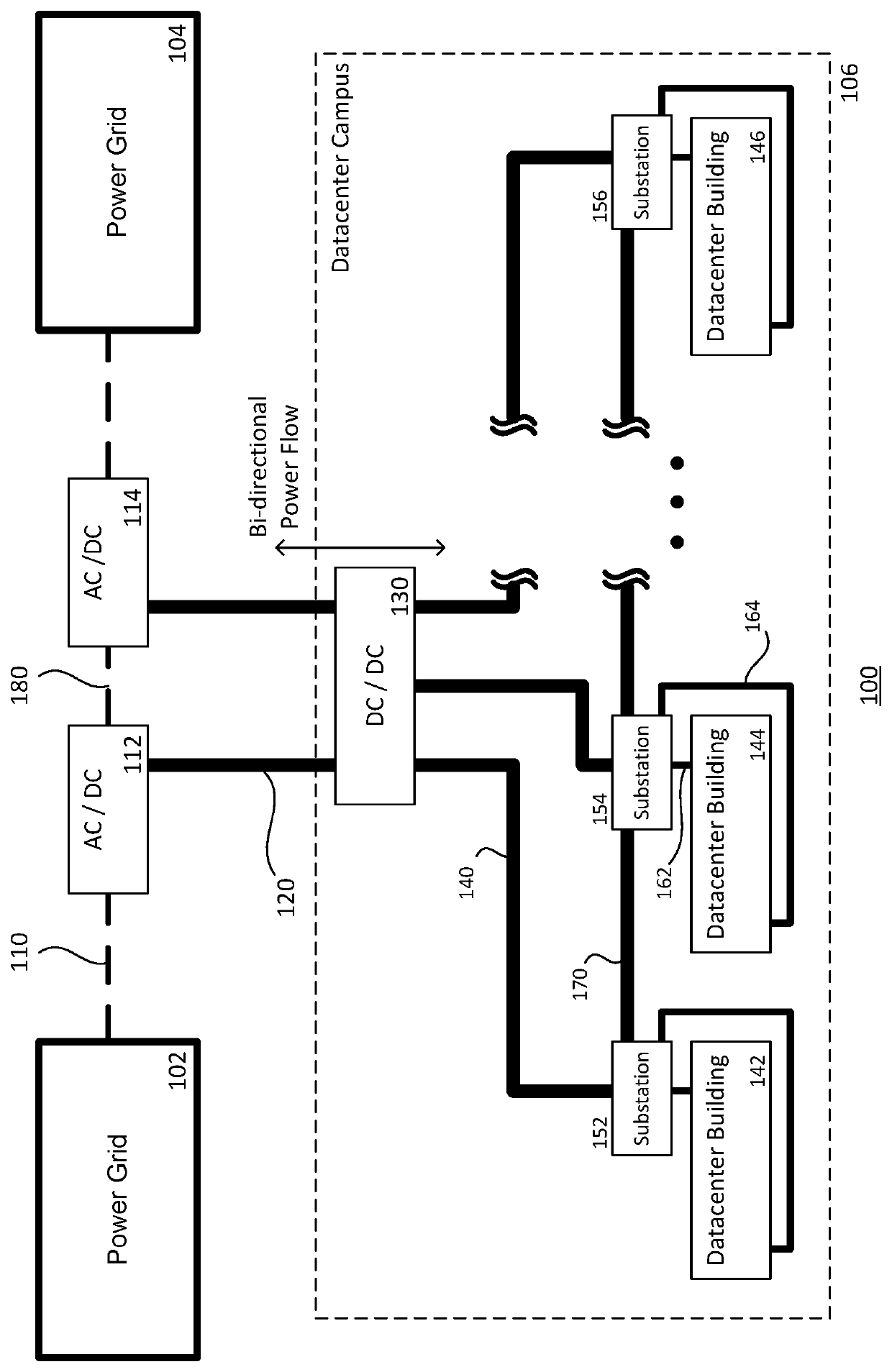High voltage superconductors for datacenter campus
a superconductors and datacenter technology, applied in superconductors/hyperconductors, connection contact materials, reactive power compensation, etc., can solve the problems of difficult connection to underground datacenter buildings, increased risk of electrical failure, and general unappealing sight of high-voltage power lines
- Summary
- Abstract
- Description
- Claims
- Application Information
AI Technical Summary
Benefits of technology
Problems solved by technology
Method used
Image
Examples
Embodiment Construction
Overview
[0023]Superconductor cables are relatively small and lightweight compared to conventional high-voltage power lines, while still being capable of providing sufficient high-voltage power to operate a large scale application, such as a datacenter campus. The present disclosure provides a topology using superconductor cables to transfer power from a power grid to a large scale datacenter to efficiently provide power to server racks at the datacenter, as well as from the large scale data center to the power grid to address grid stability. In the proposed topology, the superconductor cables are electrically decoupled from the transmission grid. For example, the superconductor cables may be configured to carry direct current (DC) power from the transmission grid to the datacenter campus, and an AC-DC converter may be used to connect the DC superconductor cable to the alternating current (AC) transmission grid. The DC superconductor cables may be connected to buildings of the datace...
PUM
| Property | Measurement | Unit |
|---|---|---|
| voltage | aaaaa | aaaaa |
| voltage | aaaaa | aaaaa |
| voltage | aaaaa | aaaaa |
Abstract
Description
Claims
Application Information
 Login to View More
Login to View More - R&D
- Intellectual Property
- Life Sciences
- Materials
- Tech Scout
- Unparalleled Data Quality
- Higher Quality Content
- 60% Fewer Hallucinations
Browse by: Latest US Patents, China's latest patents, Technical Efficacy Thesaurus, Application Domain, Technology Topic, Popular Technical Reports.
© 2025 PatSnap. All rights reserved.Legal|Privacy policy|Modern Slavery Act Transparency Statement|Sitemap|About US| Contact US: help@patsnap.com

